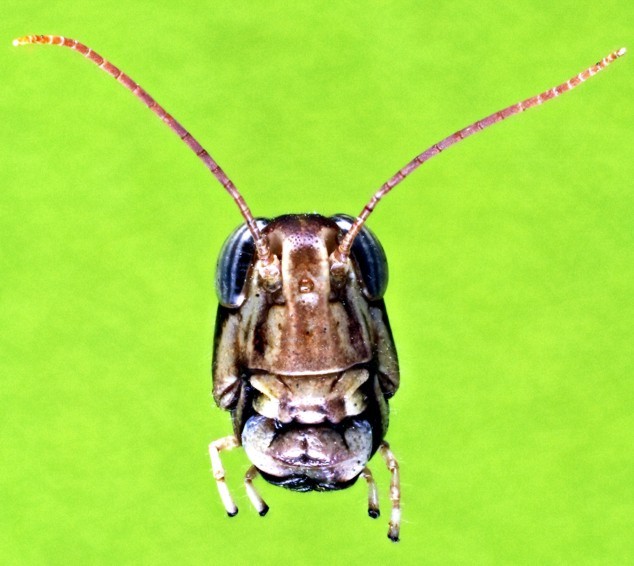Olfactory Reception in Desert Locusts
Elements and primary processes of odorant and pheromone detection in Schistocera gregaria
Desert locusts (Schistocera gregaria) are unique by their behavioural plasticity. Dependent on the environmental conditions, the animals switch between a solitary and gregarious (swarm forming) lifestyle. Locust of the gregarious phase can form migratory swarms of billions of individuals which cause enormous crop losses in invaded regions.
Current data indicate that plant odorants guide locusts to food sources and that body odors act as pheromones, which control the reproductive behaviour, maintain the gregarious phase and promote the aggregation of the animals. However, how distinct chemical signals are detected and discriminated by the population of sensory neurons in the antenna of Schistocerca gregaria is largely unknown.
To illuminate the molecular basis of odorant detection in locust, we are trying to reveal the proteins involved. A special focus of our work is on the identification of receptors for relevant plant volatiles and pheromones and in understanding of their specific role in the olfactory system. Because the transition between the solitary and gregarious form of desert locusts comes along with morphological changes of the antenna and in the responsiveness of the olfactory system, further interest is devoted to phase-dependent differences in the equipment of the locust antenna with the molecular elements of odorant detection.





